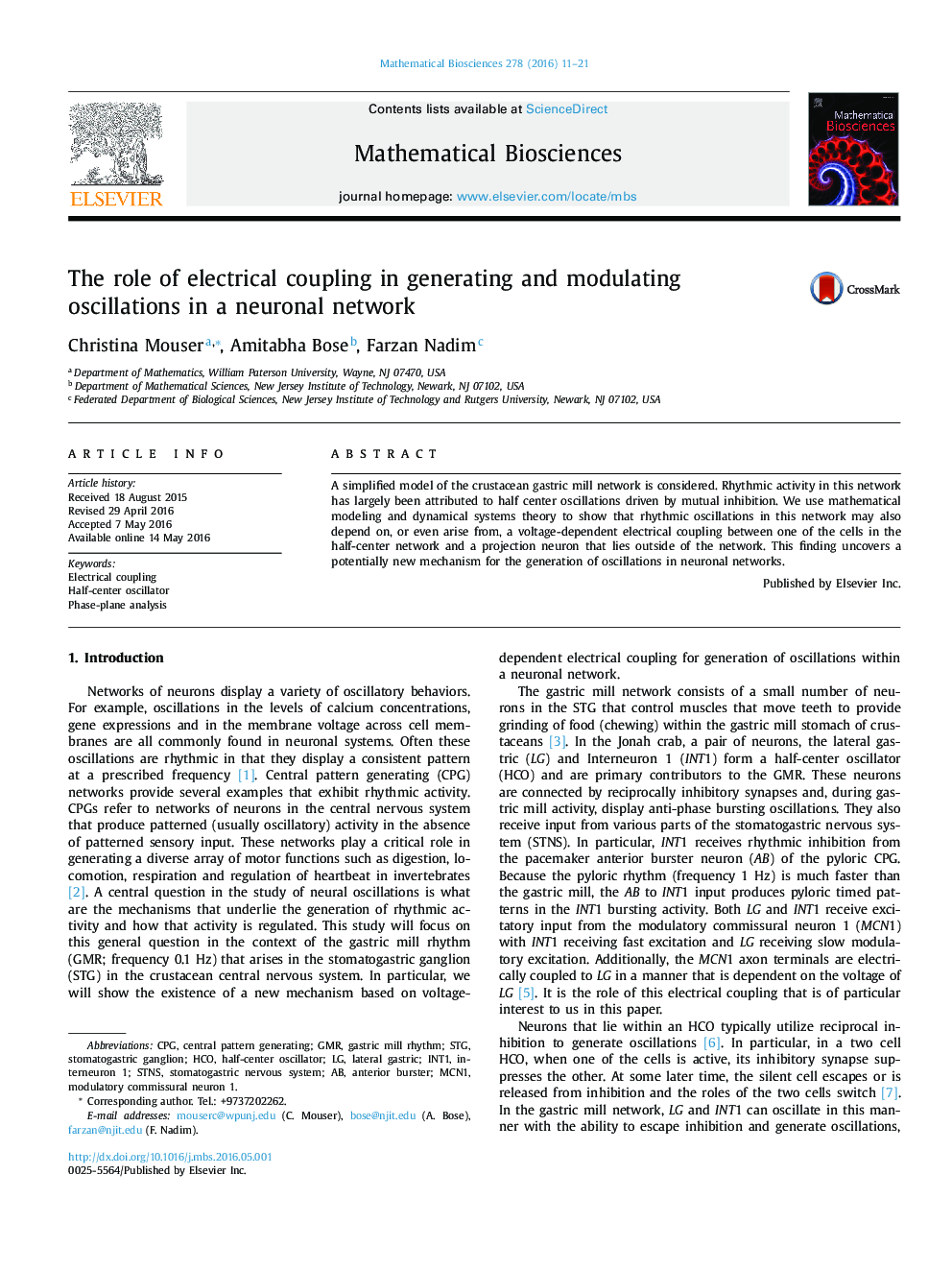| Article ID | Journal | Published Year | Pages | File Type |
|---|---|---|---|---|
| 4499871 | Mathematical Biosciences | 2016 | 11 Pages |
•A simple model is used to understand how electrical coupling affects the ability of oscillations to be created through a standard half-center oscillator mechanism is incapable of doing so.•Voltage-dependent electrical coupling is shown to provide an alternate mechanism for the generation of oscillations when an inhibition based half-center oscillator mechanism is incapable of doing so.•This same result is then demonstrated in a biophysical model based on the Morris–Lecar equations.•Conditions on the parameters in both models are derived that show why electrical coupling must be voltage dependent to produce oscillations.
A simplified model of the crustacean gastric mill network is considered. Rhythmic activity in this network has largely been attributed to half center oscillations driven by mutual inhibition. We use mathematical modeling and dynamical systems theory to show that rhythmic oscillations in this network may also depend on, or even arise from, a voltage-dependent electrical coupling between one of the cells in the half-center network and a projection neuron that lies outside of the network. This finding uncovers a potentially new mechanism for the generation of oscillations in neuronal networks.
